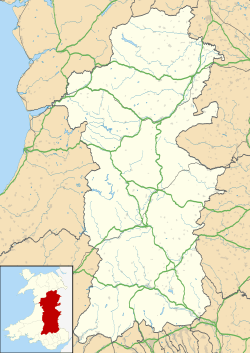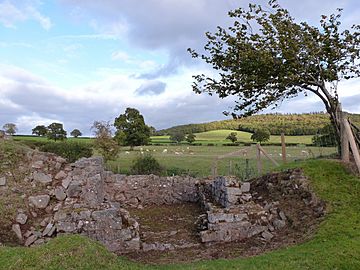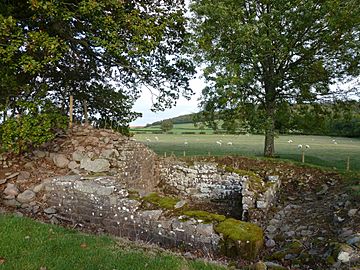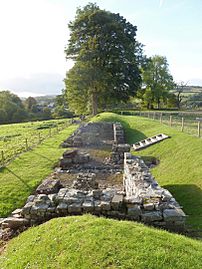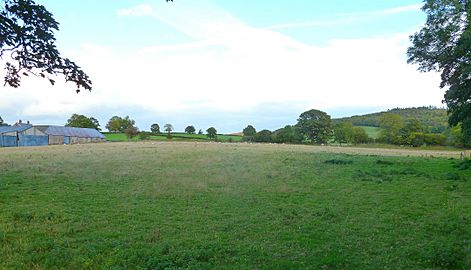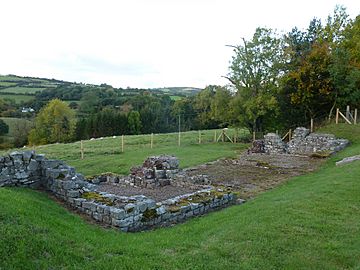Y Gaer facts for kids
Quick facts for kids Y Gaer (Cicucium) |
|
|---|---|
| Powys, Wales, UK | |
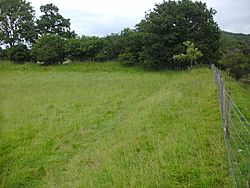
Remains of the Roman fort
|
|
|
Location in Powys
|
|
| Coordinates | 51°57′23″N 3°27′06″W / 51.9565°N 3.4517°W |
Y Gaer, also known by its Roman name Cicucium, is an ancient Roman fort located near the town of Brecon in Mid Wales, United Kingdom. This historic site was once an important military base for the Roman army.
Contents
The Story of Y Gaer
Building a Roman Fort
The Roman fort of Y Gaer was built around the year 75 AD. It was placed in a very important spot in the River Usk valley. This location was key because it sat where several Roman roads met. These roads connected South Wales with Mid Wales.
Y Gaer was part of a chain of Roman forts across Wales. These forts helped the Roman army control the land. Other forts nearby included Gobannium (now Abergavenny), which was about a day's march away. Larger bases like Moridunum (now Carmarthen) and Cardiff Roman Fort were also connected. The main Roman army base in the area was Isca Augusta at Caerleon.
Who Lived at Y Gaer?
The fort was home to about 500 Roman cavalrymen. These soldiers were horse riders. They were originally from Spain, from a group called the Vettones. These Vettonian cavalry played a big part in the Roman conquest of the area. This land was held by a local tribe called the Silures.
At first, the soldiers' stables and living areas were simple. They were made of wood. The fort was protected by banks of clay. A wooden fence, called a palisade, stood on top of these banks.
Fort Upgrades Over Time
In the 2nd century AD, the fort was rebuilt. The Legio II Augusta, a Roman legion, did this work. They made the fort stronger and more permanent. There are also signs that the fort was repaired again in the 4th century. This shows it was used for a long time.
Discovering the Past
In the 1920s, a famous archaeologist named Sir Mortimer Wheeler dug up the site. His work helped us learn a lot about Y Gaer. He found out how the fort was built and used.
Visiting Y Gaer Today
What You Can See
Today, Y Gaer is looked after by Cadw. Cadw is the Welsh government's historic environment service. The site is on private farmland. There are no signs from Cadw to guide visitors to the fort. It is located past the farm buildings at the end of the lane.
When you visit, you can still see parts of the stone walls. Some sections stand about 3 meters (10 feet) high. You can also see the foundations of three gatehouses. These were the entrances to the fort. The bases of the corner guard towers are also visible.
Artifacts from the Fort
Many items found at Y Gaer have been moved to local museums. For example, a tombstone of a young cavalryman named Candidus is at the Brecknock Museum in Brecon. These artifacts help us imagine what life was like for the Roman soldiers.


